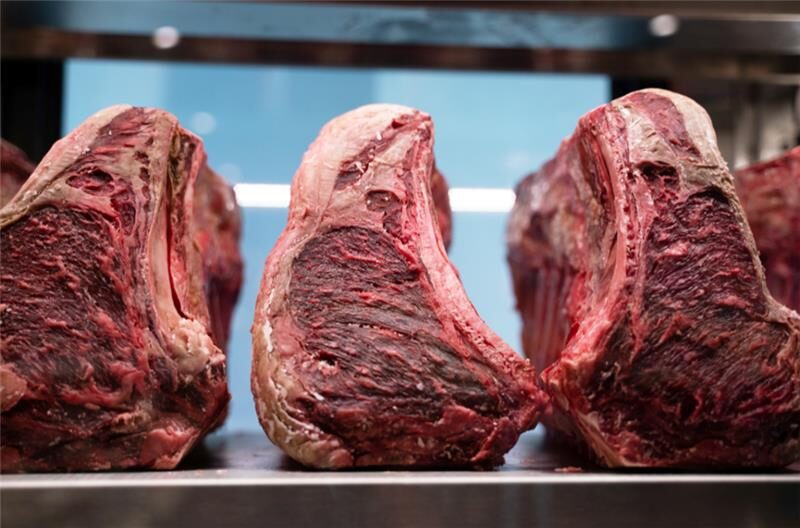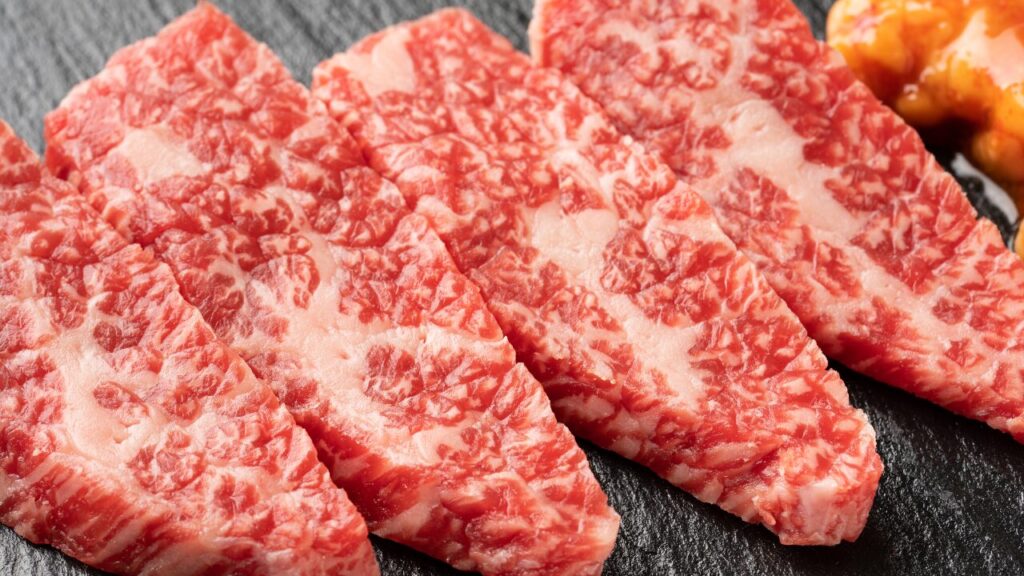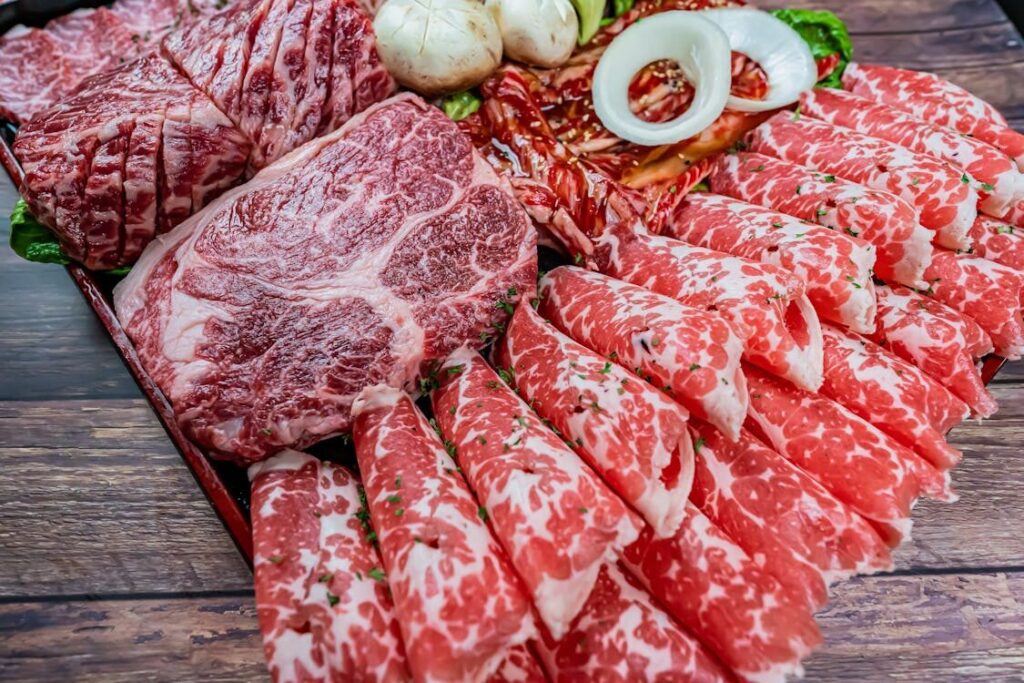If you’ve ever taken a bite of perfectly seared dry-aged steak, you know it’s not just a meal it’s a sensory journey. The tender texture, the deep, beefy richness, and the slightly nutty undertone are telltale signs of true craftsmanship. But this flavor doesn’t happen by chance. It’s the result of time, technique, and an unwavering commitment to quality. In Ontario, a new gold standard is emerging in the form of 50-day dry-aged beef, an approach honed by passionate artisans like the team at Heritage Butchery.
Let’s dive deep into what makes this process so exceptional and why it deserves a spot at the top of every steak lover’s list.
What Exactly Is Dry-Aged Beef?
Dry-aged beef is beef that has been aged in a carefully controlled environment over several weeks, sometimes even months, to enhance its natural flavor and tenderness. Unlike wet-aged beef, which is sealed in plastic and aged in its own juices, dry-aged beef is exposed to air in a humidity- and temperature-controlled room. During this process, two key transformations occur:
- Enzymatic breakdown: Natural enzymes tenderize the muscle fibers.
- Moisture reduction: Water evaporation concentrates on beef’s natural flavor.
The result is meat that is not only tender but layered with complex, umami-rich notes that are impossible to replicate through other aging methods.
Why 50 Days? Isn’t 21 or 30 Days Enough?
Most dry-aged beef in the market is aged for 21–30 days. While this does develop some character, true depth of flavor begins to emerge around the 45–50 day mark. At this stage, the beef develops a buttery texture and deep, nutty flavors. The longer aging allows for a more nuanced, steakhouse-style experience that food enthusiasts crave.
At Heritage Butchery, we’ve fine-tuned this process, allowing premium cuts like Ontario Wagyu to age for a full 50 days under expert supervision. This extended duration elevates the final result without overwhelming the natural characteristics of the meat.
The Ontario Advantage: Local Sourcing Meets Craftsmanship
Ontario’s commitment to local agriculture and ethical farming plays a significant role in the quality of dry-aged beef produced here. When you choose beef sourced from local Ontario farms, you’re not just supporting community agriculture, you’re also benefiting from fresher meat that hasn’t been frozen or shipped long distances.
Local aging also offers:
- More control over origin and handling
- Reduced time from farm to butcher
- Consistent meat quality suitable for long-term aging
Combined with the expertise of master butchers at Heritage Butchery, Ontario’s beef becomes a canvas for creating some of the world’s most memorable steaks.
Behind the Scenes: The 50-Day Dry-Aging Process Explained
Aging meat for 50 days is not as simple as letting it sit. It requires scientific precision and daily oversight.
Here’s how the process works:
1. Selection of the Cut: Only the highest-quality beef cuts are chosen for aging typically ribeye, striploin, and tomahawk steaks. Cuts with ample marbling, such as Ontario Wagyu, are ideal.
2. Controlled Environment: The beef is stored in a dedicated dry-aging room with:
- Temperature maintained between 1–3°C
- Humidity levels kept around 80–85%
- Constant air circulation to avoid bacterial growth
3. Formation of the Crust: Over time, the outer layer of the beef forms a hard crust. This acts as a protective shield, while the inside continues to develop richness.
4. Regular Inspections: Throughout the aging period, butchers inspect the meat for aroma, firmness, and even microbial growth to ensure the process is on track.
By the time day 50 arrives, the beef has not only matured in taste but also in texture, offering a melt-in-the-mouth tenderness that’s both rare and exquisite.
Wagyu + Dry Aging: A Match Made in Ontario
If there’s a pinnacle in beef artistry, it’s the combination of Wagyu and dry aging. Ontario Wagyu, known for its intense marbling and buttery texture, becomes even more luxurious after 50 days in the aging room.
Here’s why the two work so well together:
- Marbling softens and breaks down, creating a silky mouthfeel.
- Aged fat renders more cleanly, giving each bite a rich, savory finish.
- Flavor depth increases without sacrificing the natural sweetness of Wagyu.
This makes 50-day dry-aged Wagyu one of the most indulgent and refined steak experiences available not just in Ontario, but anywhere in the world.
What Does 50-Day Dry-Aged Beef Taste Like?
The transformation in flavor is astonishing. Dry-aged beef is often described with wine-like characteristics due to its complex profile. After 50 days, the taste notes typically include:
- Umami-rich savoriness (deep, meaty flavor)
- Subtle nuttiness (especially near the fat cap)
- Earthy undertones (due to enzymatic development)
- Buttery texture (thanks to collagen breakdown)
It’s bold without being overpowering and delicate without being bland. For anyone who considers themselves a steak connoisseur, this is a must-try.
Tips from the Butcher: How to Cook and Serve Dry-Aged Beef
When you’ve got a premium cut of 50-day dry-aged beef, the goal is to let the beef shine. Here’s how to make the most of it:
Before Cooking:
- Let the beef come to room temperature.
- Pat dry and season simply with coarse salt and cracked pepper.
- No need for marinades or rubs the flavor is already there.
During Cooking:
- Use a cast iron skillet or open-flame grill for a proper sear.
- Cook to medium-rare or medium for best texture.
- Allow the meat to rest for 5–10 minutes before slicing.
Serving Suggestions:
- Pair with simple sides like garlic mash or grilled asparagus.
- Skip overpowering sauces go for a basic compound of butter if needed.
- Serve with bold red wines like Malbec, Syrah, or Cabernet Sauvignon.
Buying Dry-Aged Beef: What to Look For
Dry-aged beef can vary greatly in quality. When shopping, keep these key pointers in mind:
- Dark exterior crust: (this is normal and trimmed before cooking)
- Firmness: well-aged beef will feel dense, not squishy
- A rich, nutty aroma:never sour or off-putting
- Visible marbling: especially important in Wagyu cuts
If you’re looking for premium beef cuts that meet these criteria, Heritage Butchery offers a curated selection aged with full transparency and care.
Why Heritage Butchery? A Commitment to Craft and Transparency
In an era where mass production overshadows tradition, Heritage Butchery stands out for its commitment to artisanal practices. What makes us different?
- In-house 50-day dry-aging facility
- Sourcing from trusted Ontario farms
- Focus on Wagyu Ontario and premium cuts
- Expert guidance and customer transparency
- Small-batch aging with quality-first focus
Whether you’re new to dry-aged beef or a seasoned aficionado, our goal is to offer steak that speaks for itself loudly and deliciously.
Conclusion: Taste the Time, Experience the Craft
Aged to perfection and full of character, 50-day dry-aged beef is a tribute to patience, precision, and passion. It’s the kind of meat that transforms a meal into a moment elevating even a simple steak dinner into something unforgettable.
Ontario has carved out a unique space in the world of premium beef, and at Heritage Butchery, we’re proud to be leading the charge. If you’re ready to experience beef as it was meant to be aged slowly, cut expertly, and served with pride our doors (and butcher block) are open.
Call to Action
Call us today at (905) 631-0000 or visit our website today to explore our selection of 50-day dry-aged beef and premium Wagyu cuts. Taste the difference that time and craftsmanship make.
Get directions to our local store




